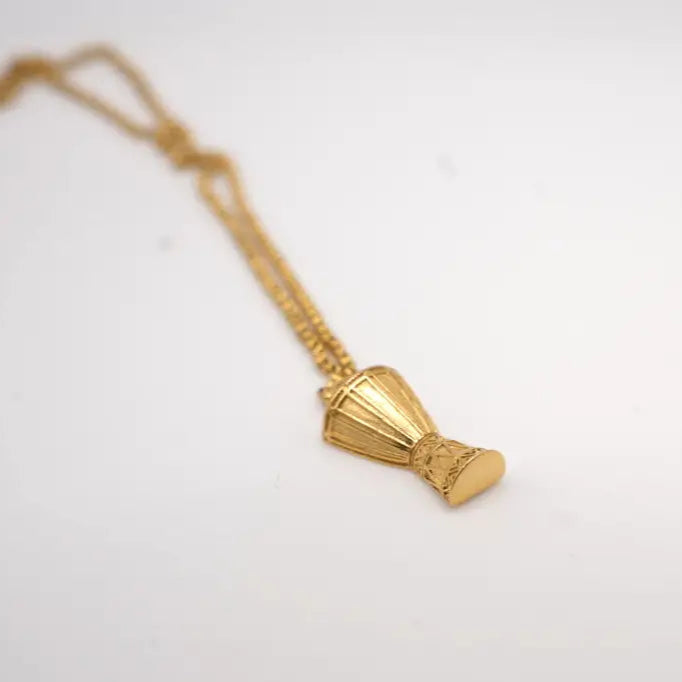
Origin and Spread of Adinkra Symbols
If you ever wondered the story behind the Adinkra symbols, you're in the right place.
Adinkra Symbols: A Rich Cultural Heritage from Ghana and Cote d'Ivoire
Adinkra symbols are an ancient collection of visual representations that trace their origins back to the Akan people of Ghana and Cote d'Ivoire. These symbols, believed to have emerged from the Bono people in Ghana, were initially used as a means of communication and expression within the culture. With a profound history, they carry deep cultural and philosophical significance.
What we surely know is that Adinkras were made by the Bono people of Gyaman. The legends say that the Adinkra symbols were revealed to Nana Kwadwo Agyemang Adinkra, the Gyaman king, in his dreams. Nana Kwadwo Agyemang Adinkra designed these symbols, naming them after himself.

Named after Nana Kwadwo Agyemang Adinkra, the king of the Bono people, these symbols were initially exclusive to the king's attire. Eventually, they found their way onto fabrics worn by royals during significant ceremonies. Their popularity grew, spreading from the Bono to the Asante and other Akan communities.

In 1818 the Gyaman King replicated the Golden Stool, which embodied the absolute power and unity of the Asante. The Asante king, Osei Tutu Kwamena Asibey Bonsu, was so outraged by his actions that he led his army against him and defeated him. After the war, the Asante people adopted the adinkra symbols and made them part of their own culture. Both Gyman and Asante are part of the Akan group and can be traced in modern Ivory Coast and Ghana.
The meaning of the word Adinkra
The word Adinkra in the twi language means “saying goodbye to one another when parting”. That's why adinkra cloths are usually used during funerals. They can also be worn during different ceremonies, such as the naming ceremony of the newborn, Akan festivals, and weddings.
Back in the day the adinkra cloth used to be associated with royals, then it became popular among all categories of people.

Artistic Expression and Symbolism
Traditionally printed on textiles using specialised tools and natural dyes, Adinkra symbols transcended fabric and permeated various art forms such as pottery, architecture, and tools for domestic and ritual use. More than mere decoration, these symbols embody moral values, convey important messages, share daily life stories, and offer wisdom and advice. Each symbol, often consisting of geometric lines and dots, holds unique meanings, representing concepts like prosperity, unity, and proverbs. For example, the "Sankofa" symbol, featured in our logo, signifies the importance of learning from the past.
What does Adinkra represent?
Adinkra are visual symbols or ideographs that represent concepts and aphorisms. They have been used for centuries to convey traditional wisdom, historical events, human attitudes, animal behavior, plant life, forms, and shapes of objects.
They can communicate a relatively complex idea within a simple symbol.
So how many adinkra symbols are there?
There are as many as 122 symbols. Each symbol of Adinkra has a special meaning and can be linked with proverbs.
Some examples of common Adinkra symbols include:
- The Sankofa means “learn from the past”. To build a better future, we should go back to our roots, which is also the one found in our jewelry store: Doore Dasi.


- Odo Nnyew Fie Kwan means “Love does not lose its way home”

- Gye Nyame means “expect god”; It symbolizes God's omnipotence through the knowledge that people should not fear anything except for God.

- Adinkrahene means “the king of Adinkra”; It's the symbol of authority, leadership, and charisma.

- Duafe means “wooden comb” and symbolizes beauty, hygiene, and feminine qualities.

Global Recognition
Due to the rise in tourism and the African diaspora, Adinkra symbols have gained international recognition beyond the Akan community. We see them not only in fabrics, but they are now prominently featured in logos, jewelry, sculpture, art, fashion, furniture, architecture, and more. Have you ever noticed them incorporated in gates?
Although Adinkra symbols are centuries old, they still have meaning and significance. They symbolize the richness of Akan culture. They have become integral to the culture of West Africa and have found widespread acceptance in the Western world.
The African Diaspora has adopted them as an extension of their identity.
The expression of who you are, your intentions and the messages you want to convey is made clear by wearing Adinkra symbols.
Dore Dasi: Preserving Cultural LegacyAt Dore Dasi, we pay homage to the rich history of Adinkra symbols, embracing their cultural legacy. We are committed to sharing these symbols and the vibrant culture of our beautiful continent with the world. Join us in celebrating the artistry and profound symbolism of Adinkra, connecting the past with the present, and preserving this invaluable cultural heritage.
Explore our collections to discover the timeless beauty of Adinkra symbols and be part of our journey to honor Africa's cultural richness.
Author: Bimata Bance









